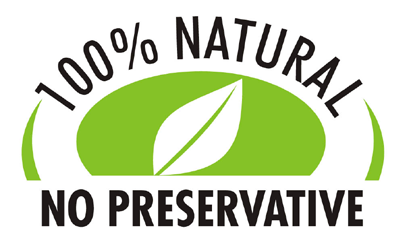
FREQUENTLY ASKED QUESTIONS:
WHAT IS MANUKA HONEY?
Manuka honey is a special variety of honey with excellent properties. Produced in New Zealand, it is particularly creamy and fragrant, with an intense orange colour! For almost twenty years, researchers tried to identify the mysterious unknown factor that makes Active Manuka Honey so extremely different from common honey.
A team of German food chemists from the Technical University of Dresden were in any case able to identify methylglyoxal as the active ingredient giving manuka honey it its properties, which until then had been named UMF, or Unique Manuka Factor.
WHERE DOES MANUKA COME FROM?
The manuka plant grows, above all, in New Zealand, but also in several regions of Australia. Captain James Cook gave it the official botanical name of Leptospermum scoparium, because he thought its disorderly branches made the shrub look like a broom, or scopa in Latin. The manuka plant can grow to various heights, from 5 centimetres of cover crop to 15 metre tall tree, though it usually appears as shrub of a height between 2 and 5 metres. It is defined as a ’pioneer plant’, as it is incessantly the first to colonize deforested areas.
For this reason, in New Zealand, there are vast hilly areas covered with manuka, offering lovely fragrant and sweeping blooms of white flowers. Manuka offers a suitable habitat for many animal species, including bees that, from the plant nectar, produce manuka honey with excellent properties. For this reason, beekeepers tend to place their beehives near to the plants in uncontaminated natural surroundings, in order to produce fine manuka honey.
WHAT IS UMF, OR UNIQUE MANUKA FACTOR?
For many years, scientists were unable to isolate the ingredient responsible for the properties of manuka honey. It was agreed to call this missing ingredient Unique Manuka Factor, or UMF. Its intensity of action was compared to the effectiveness of that of phenolic acid against various bacteria, and was classified, for example, as UMF10 if it proved as effective as a 10% phenol solution.
A plus sign (+) was added to indicate an even greater degree of effectiveness (e.g. UFM10+ or UFM20+). This form of grading was considered satisfactory for many years, although there were no accurate and reproducible tests to indicate exactly the amount of active ingredient in a batch of manuka honey. Only thanks to the discoveries of a team of dedicated chemists was the Unique Manuka Factor in any case identified as methylglyoxal.
WHAT IS METHYLGLYOXAL?
A team of food chemists led by Thomas Henle at the Technical University of Dresden in any case managed to identify the Unique Manuka Factor as the compound methylglyoxal. Methylglyoxal is the active ingredient in manuka honey responsible for its properties, and for differentiating it from any other honey in the world. The amount of methylglyoxal in a honey sample can now be decided as a precise percentage (e.g. 100mg of methylglyoxal in 1kg of honey).
The various types of manuka honey are graded relating to quality by their concentrations of methylglyoxal, since manuka honeys with a similar appearance, consistency and taste can have a varying degree of effectiveness. High methylglyoxal values are NOT detectable on the basis of flavour alone. This is why chemical analysis is necessary.
We at NaturalePiù market and sell Manuka Honey graded MG 100+, 200+, 400+, 500+ and 800+, in packs of 250g and 500g.
 |
 |
 |
 |
 |
|
|---|---|---|---|---|---|
| Manuka Honey 100+ MGO | Made in New Zealand | Manuka Honey 200+ MGO | Made in New Zealand | Manuka Honey 400+ MGO | Made in New Zealand | Manuka Honey 500+ MGO | Made in New Zealand | Manuka Honey 800+ MGO | Made in New Zealand | |
| Methylglyoxal MG 100+ | ✓ | ||||
| Methylglyoxal MG 200+ | ✓ | ||||
| Methylglyoxal MG 400+ | ✓ | ||||
| Methylglyoxal MG 500+ | ✓ | ||||
| Methylglyoxal MG 800+ | ✓ |
WHAT IS THE TASTE & TEXTURE LIKE?
Manuka honey has a very different taste and texture from the common honey we readily find marketed. It has an orange-yellow colour and dense and creamy texture, so that it melts slowly in hot drinks. Its aroma is intense and its flavour is strong and decisive yet unmistakably sweet.
High methylglyoxal grade are NOT detectable on the basis of flavour alone, and must be decided by chemical analysis, so it is all the time important to check the grading on labelling.
HOW CAN I CONSUME MANUKA HONEY?
Manuka honey is particularly sweet and delicious even in its purest form. On the other hand, if you aren’t a fan of its intense flavour but still want to make the most of all its properties, you can add it to:
- yoghurt, milk,
- infusions and teas
- as a sweetener,
- spread it on bread, rusks and toast,
- use it as a condiment for salads
- as an ingredient in homemade biscuits, cakes and desserts,
- milkshakes, smoothies and fruit juice preparations.

100% PURE AND ORIGINAL
Our manuka honey is 100% pure and genuine, unpasteurised and is produced exclusively in New Zealand in uncontaminated areas where manuka grows without any artificial intervention.
At NaturalePiù we pay particular attention to the selection of all our products.
All our manuka batches are certified by accredited laboratories, with methylglyoxal content test results published.

…bread, rusks or toast…
For a rich and nutritious breakfast, spread a teaspoon of manuka honey on rusks or toast, or add some to your yoghurt or muesli!

…a dressings on your dishes…
As it is an intensely flavoured honey, it lends itself very well to rich tasting dishes. Salmon and similar fish are a perfect match, as well as vegetable, legume and cereal based recipes, but also more delicate meats such as chicken or turkey. Manuka honey can also be emulsified with olive oil and lemon to bring a welcome touch of freshness to your salads!























